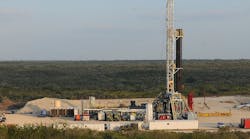With Congress in recess and the Obama administration concentrating on other issues, late summer is a good time to sample some oil and gas statistics.
From the latest US Bureau of Labor Statistics Consumer Price Index, released Aug. 14: After rising 4.2% in June, the transportation index increased 0.2% in July. Most of the moderation was due to the motor fuel index, which fell 0.4% in July after jumping 17.2% the previous month, the US Department of Labor's statistical service said.
Petroleum import prices fell 2.8% during July after climbing 66.6% the previous 5 months, BLS said in another report. "Despite the jump between February and June, petroleum prices fell 49.9% over the past year," it added.
BLS's oil import price index fell 1.6% last month from June's level and came in 51.1% lower than the July 2008 figure, while its oil product price index was down 1.6% and 49.9%, respectively, for the same periods. Its natural gas import price index plunged 9.4% from June's level and was 68.8% lower than in July 2008.
WTI spot prices
How does that fit with the US Energy Information Administration's latest short-term energy outlook? It reported on Aug. 11 that the West Texas Intermediate oil spot price fell from $71.47/bbl on June 29 to $59.62/bbl on July 14 before rebounding to $71.59/bbl on Aug. 3.
In its monthly statistical bulletin for June, the American Petroleum Institute reported on July 16 that US petroleum product demand plunged to its lowest first-half level in more than a decade as the sluggish economy continued to squeeze oil consumption.
Domestic crude and condensate production, meanwhile, grew 3.4% in 2009's first half from the comparable period a year earlier, it added. Crude and product imports during 2009's first half were 7.6% lower year-to-year and 12% less than the comparable period 3 years ago, API said.
In a separate report on July 15, API said the number of US oil wells, gas wells, and dry holes drilled during the second quarter fell 46% year-to-year.
Growth area
Oil and gas extraction employment within the BLS employment survey's construction and extraction occupation sector in July was an estimated seasonally adjusted 169,600 jobs, 500 more than June's 169,100 jobs and 6,900 more than July 2008's 162,700 jobs.
It was the 67th consecutive month of employment growth in the subsector since December 2003, when BLS listed 118,400 oil and gas extraction jobs.
The subsector does not cover the entire oil and gas industry: Gas plant operators and refinery employees are part of the production sector, and wellhead pumpers and gas compressor and pumping station operators come under BLS's transportation and material moving sector. But the continuing oil and gas extraction job growth is curiously at odds with other government and industry statistical indicators.

